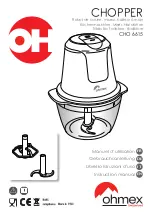
Programmers Model
ARM DDI 0500D
Copyright © 2013-2014 ARM. All rights reserved.
3-3
ID021414
Non-Confidential
3.1.2
Memory model
The Cortex-A53 processor views memory as a linear collection of bytes numbered in ascending
order from zero. For example, bytes 0-3 hold the first stored word, and bytes 4-7 hold the second
stored word.
The processor can store words in memory as either:
•
Big-endian format.
•
Little-endian format.
See the
ARM
®
Architecture Reference Manual ARMv8, for ARMv8-A architecture profile
for
more information about big-endian and little-endian memory systems.
Note
Instructions are always little-endian.
3.1.3
Jazelle implementation
The Cortex-A53 processor supports a trivial Jazelle implementation. This means:
•
Jazelle state is not supported.
•
The
BXJ
instruction behaves as a
BX
instruction.
In the trivial Jazelle implementation, the processor does not accelerate the execution of any
bytecodes, and the JVM uses software routines to execute all bytecodes. See the
ARM
®
Architecture Reference Manual ARMv8, for ARMv8-A architecture profile
for information.
3.1.4
Modes of operation
In AArch32, the processor has the following instruction set operating states controlled by the T
bit and J bit in the CPSR.
A32
The processor executes 32-bit, word-aligned A32 instructions.
T32
The processor executes 16-bit and 32-bit, halfword-aligned T32
instructions.
The J bit and the T bit determine the instruction set used by the processor.
Table 3-1
shows the
encoding of these bits.
Note
•
The processor does not support Jazelle state. This means there is no processor state where
the J bit is 1 and T bit is 0.
•
The processor does not support T32EE state. This means there is no processor state where
the J bit is 1 and T bit is 1.
•
Transition between A32 and T32 instruction set states does not affect the processor mode
or the register contents.
Table 3-1 CPSR J and T bit encoding
J
T
Instruction set state
0
0
A32
0
1
T32
















































